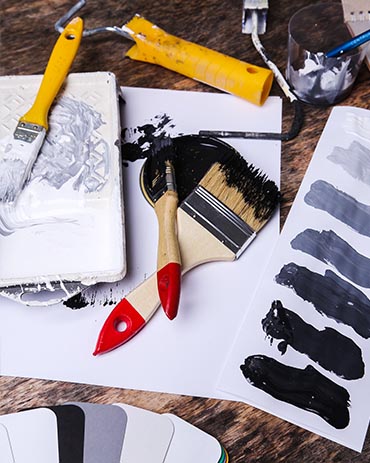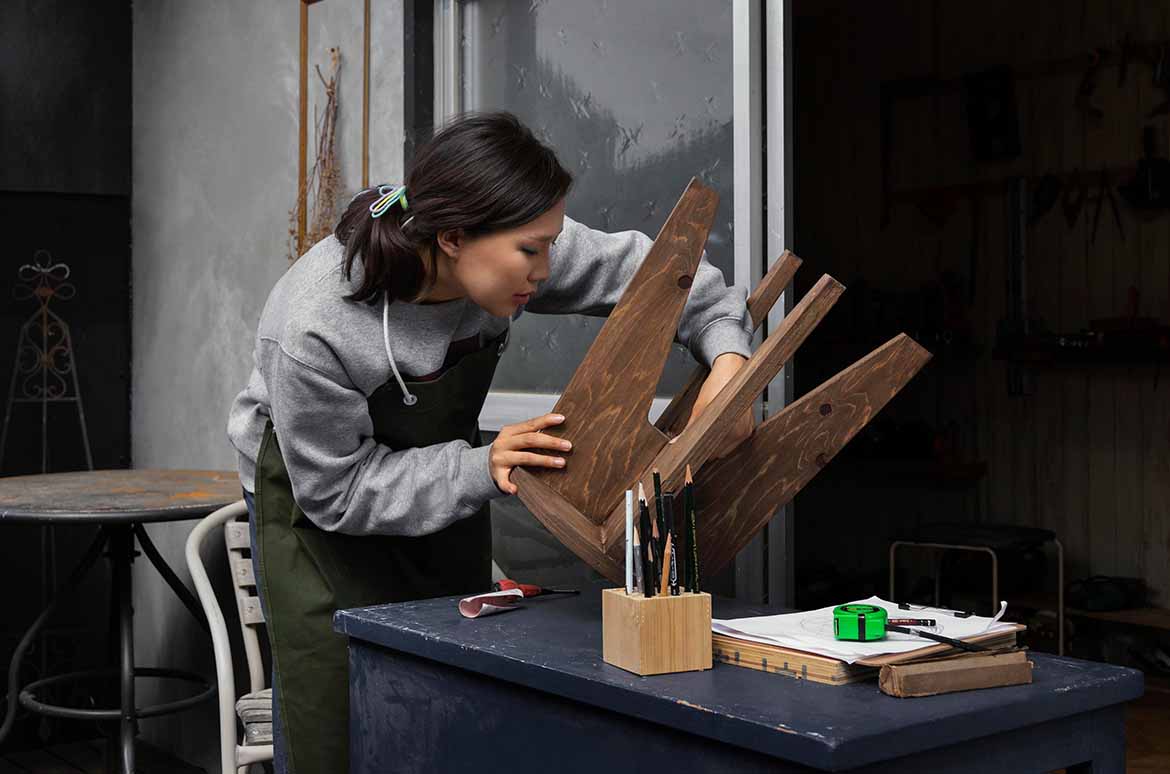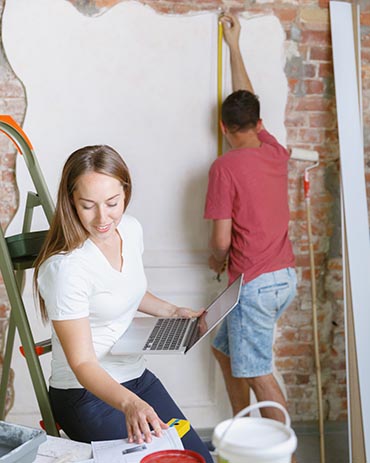Table of Contents
Home improvement projects can be both fulfilling and cost-effective, especially when you take the DIY route. Whether you’re looking to upgrade your living space, increase the value of your home, or simply want to try your hand at something new, DIY home improvement projects offer a fantastic opportunity to learn new skills and personalize your home.
Why Choose DIY Home Improvement Projects?
Taking on DIY home improvement projects gives you complete control over the process, allowing you to customize every detail to your liking. It can also save you a significant amount of money by cutting out labor costs. Plus, the sense of accomplishment you’ll feel after completing a project is unmatched.
Getting Started: Essential Tools and Materials
Before you begin any DIY home improvement project, having the right tools and materials is crucial. Basic tools like a hammer, screwdriver set, tape measure, and power drill are essential. Depending on the project, you might also need paint, wood, nails, and adhesive.
Simple DIY Home Improvement Projects for Beginners
If you’re just starting out with DIY home improvement projects, it’s important to choose tasks that are manageable yet impactful. These projects will not only give your home a fresh look but also build your confidence in tackling more complex tasks down the road.
Painting a Room

One of the easiest and most effective ways to transform a space is by painting. Whether you’re adding an accent wall or refreshing the entire room, painting is a beginner-friendly project that delivers immediate results. Choose a color that complements your décor, and don’t forget to prep the walls by cleaning and priming them first.
Tips for Success:
- Use painter’s tape to ensure clean lines.
- Start with a small area to get comfortable with the technique.
- Apply multiple coats for an even finish.
Installing New Light Fixtures
Upgrading your lighting can drastically change the ambiance of a room. Replacing an old fixture with a modern one is a simple DIY home improvement project that requires minimal tools and skills. Make sure to turn off the power at the breaker box before starting, and follow the manufacturer’s instructions carefully.
Tips for Success:
- Choose a fixture that matches your room’s style.
- Double-check the wiring connections for safety.
- If you’re unsure, consult an online tutorial or a knowledgeable friend.
Replacing Cabinet Hardware

Swapping out old cabinet knobs and pulls for new ones is a quick and easy way to update your kitchen or bathroom. This project requires only a screwdriver and a bit of time, making it perfect for beginners. Choose hardware that matches your overall design theme for a cohesive look.
Tips for Success:
- Measure the spacing of your existing hardware to find replacements that fit.
- Use a template to ensure consistent placement.
- Consider adding a touch of color or texture with unique hardware designs.
Creating a Gallery Wall
A gallery wall is a great way to personalize your space with photos, artwork, and other mementos. It allows you to showcase your creativity without requiring any special skills. Start by laying out your frames on the floor to find the perfect arrangement before hanging them on the wall.
Tips for Success:
- Mix and match frame sizes for visual interest.
- Use painter’s tape to plan the layout on the wall before hanging.
- Keep the spacing between frames consistent for a polished look.
Building a Simple Shelf
Adding a shelf to your wall can provide both storage and style. This DIY home improvement project is a great introduction to basic carpentry. You’ll need a piece of wood, brackets, a drill, and screws. Once installed, you can use the shelf to display books, plants, or decorative items.
Tips for Success:
- Sand and paint the wood before installing for a smooth finish.
- Use a level to ensure the shelf is straight.
- Anchor the brackets into wall studs for stability.
Installing a Backsplash
A backsplash can add color and texture to your kitchen or bathroom while protecting the walls from spills. Peel-and-stick tiles are an excellent option for beginners as they require no grout or special tools. This project can be completed in a weekend and will instantly refresh your space.
Tips for Success:
- Clean the wall surface thoroughly before applying the tiles.
- Start from the center and work your way out for a balanced look.
- Use a utility knife to cut tiles to fit around outlets or edges.
Updating Window Treatments

New curtains, blinds, or shades can change the look and feel of a room without much effort. This project is easy to do and can be customized to your taste. Consider layering different types of window treatments for added texture and dimension.
Tips for Success:
- Measure your windows carefully before purchasing.
- Choose materials that complement your room’s décor.
- Use curtain rods or hardware that matches the style of your space.
Intermediate DIY Projects: Taking it Up a Notch
Once you’re comfortable with the basics, you can tackle more complex DIY home improvement projects. Building a bookshelf, installing a backsplash, or creating a garden bed are great ways to enhance your home while honing your skills.
Advanced DIY Home Improvement Projects for the Experienced
For those with more experience, advanced projects like installing hardwood floors, renovating a bathroom, or building a deck can be both challenging and rewarding. These projects require a higher skill level and a significant time investment, but the results can greatly increase your home’s value.
Common Mistakes to Avoid in DIY Home Improvement Projects
Even the most seasoned DIYers can make mistakes. Avoid common pitfalls like underestimating the time a project will take, not having enough materials, or skipping the planning stage. Always measure twice and cut once, and don’t be afraid to ask for help if you need it.
Budgeting for Your DIY Projects
Budgeting is a critical part of any DIY home improvement project. Start by listing all the materials and tools you’ll need, then estimate the costs. It’s also wise to include a buffer for unexpected expenses. Sticking to your budget will ensure your project is both successful and affordable.
Safety Tips for DIY Home Improvement Projects
Safety should always be your top priority when working on DIY projects. Wear protective gear, keep your workspace clean, and never rush through a task. If you’re working with power tools or heavy materials, make sure you’re familiar with the proper safety procedures.
Conclusion
DIY home improvement projects are a fantastic way to enhance your living space while learning new skills. With careful planning, the right tools, and a bit of patience, you can tackle projects that will transform your home. Whether you’re a beginner or a seasoned DIYer, there’s always something new to try. Just remember to stay safe, stick to your budget, and most importantly, have fun with your DIY journey!
FAQs
Beginners should start with simple projects like painting, installing shelves, or replacing hardware. These projects are easy to complete and can make a big impact.
Start by listing all the materials and tools needed, then estimate the costs. Add a buffer for unexpected expenses to stay within budget.
Basic tools include a hammer, screwdriver set, tape measure, and power drill. The specific tools will vary depending on the project.
Always wear protective gear, keep your workspace clean, and follow safety procedures. If you’re unsure about something, don’t hesitate to ask for help.
Mistakes are common in DIY. Assess the situation, consult resources, and try to fix the error. If it’s beyond your skill level, consider professional help.


